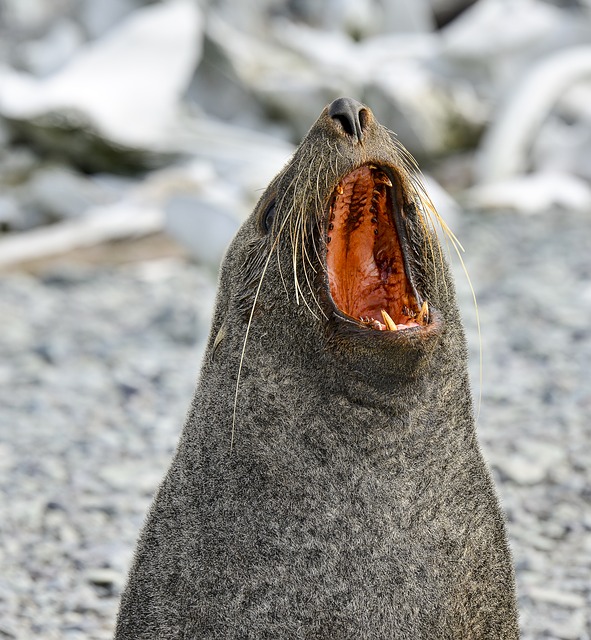
THE ANTARCTIC CRABEATER SEALS THAT DON’T EAT CRABS
Well, yes, they are called Crabeater Seals but they don’t eat crabs at all. One reason is because crabs are extremely rare in Antarctic waters and those that are there live at very deep depths.
The name Crabeater is thought to come from the German word ‘Krebs’ which refers to crustaceans so I suppose the term is kind of appropriate because they do eat krill (little shrimp) – about 90% of their diet plus some fish.
In fact, since there are estimated to be about 15 million crabeater seals (no-one is really sure), and since they each eat up to 20kg of krill daily, it is estimated that they consume maybe 300,000 tonnes or more every day.
Though they loll around on the pack ice relaxing it is not an easy life. Many of the adults bear the scars of Leopard seal attacks (their biggest predator) from when they were young and 80% of them don’t make it to one year of age because of those attacks.
If the Leopard seals don’t get them the Orcas (Killer Whales) will, often by coming up under the ice and smashing it, then eating the pups as they fall in the water.
Crabeaters have these amazing teeth that help them eat krill. They take in sea water containing krill, close their teeth, which interlock but have lots of small gaps, then they expel the sea water through the gaps, like a strainer, and the krill stay behind in their mouths and are eaten.
Since krill come to the surface at night the Crabeaters usually eat at night as well.
By using their front flippers and moving their lower back region like a snake they can move very quickly on the ice, around 20-25km/hr, and could outrun a human over a short distance.

They are not really a danger though since they tend to be the most easily spooked of the Antarctic seals and are relatively shy.
Juvenile Crabeaters sometimes get disorientated searching for food and head inland, rather than out to sea. Their mummified (dried out) remains are often found in the dry river valleys of Antarctica up to 100 km from the ocean.
Since the juveniles, after weaning, will weigh more than 110kg (an adult can weigh 240 kg), that’s an awful long way to drag your fat butt just to starve to death. Even nature gets it wrong sometimes.
They are the most numerous of the Antarctic seals and are protected under the Antarctic Treaty.

